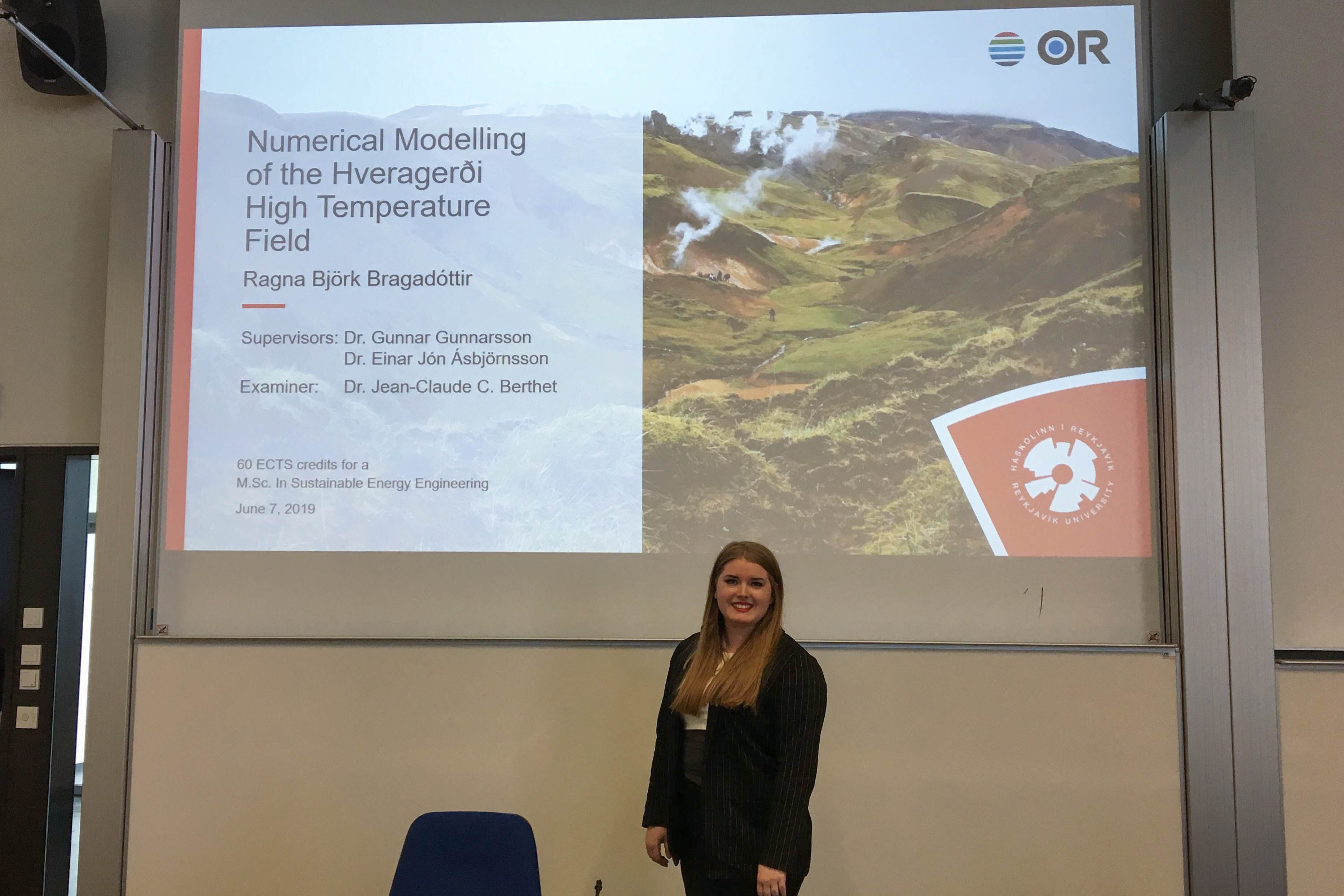MSc Thesis: Numerical modelling of the Hveragerði high temperature field
REYKJAVIK, June 07 - MSc in Sustainable Energy Engineering candidate, Ragna Björk Bragadóttir, successfully defended her master's thesis where she performed TOUGH2 numerical modelling for the Hveragerði high temperature geothermal field and its production capacity. Ragna's research was supervised by Gunnar Gunnarsson from Orkuveita Reykjavíkur, and Einar Jón Ásbjörnsson from Reykjavik University.

Setting the context of her research, Ragna shares that the Hveragerði geothermal field is located 40 km South-East of Reykjavik, Iceland. The field is on the eastern margin of the Western Rift Zone and on the western end of the South Iceland Seismic Zone. North-East of the field is the Hengill Area, where the Hellisheiði and Nesjavellir geothermal power plants are located.
As Ragna explains, the geothermal field has been used for district heating since the 1920s and in 1952 the Hveragerði municipality district heating utility was established, thereby becoming one of the first district heating utility in Iceland. Now, with the rapid population and industry growth in and around the municipality of Hveragerði, there has been an increased need for stable thermal power. In order to sustain the high service standards that are set for district heating in Iceland, Ragna stipulates that additional thermal production capacity will be needed in the area. To increase production, she cautions, an estimate of the optimal and sustainable production in the field is required, along with a thorough understanding of its characteristics.
In order to perform her research, Ragna collected and compiled available data for the Hveragerði geothermal field in order to get an idea on how it is structured. She estimated the formation temperatures of wells, and from the available information, developed a numerical model using TOUGH2. She then calibrated her model using the formation temperatures. Ragna estimated the production history of the field and using the calibrated numerical model simulated the the production of the field to date.
Ragna found that there was a good match between the calculated formation temperatures and the formation temperatures estimated from downhole temperature data. Her production simulation showed that there is a relatively little drawdown in the field and there is a good possibility that more mass could be produced from the field.
Congratulations Ragna for completing an excellent thesis project!
Presently, Ragna is working at OR as a Research Project Manager in the Research and Innovation department. Ragna's work is primarily related to H2020 research and innovation projects, and include CarbFix and GECO as well as other local and international research projects.
Gunnar holds a PhD in Experimental Physics from the University of Basel, in Switzerland. Since 2008, he has been working at OR as a reservoir engineer. His main responsibility has been building and maintaining numerical models of the high temperature geothermal fields in the Hengill Area.
